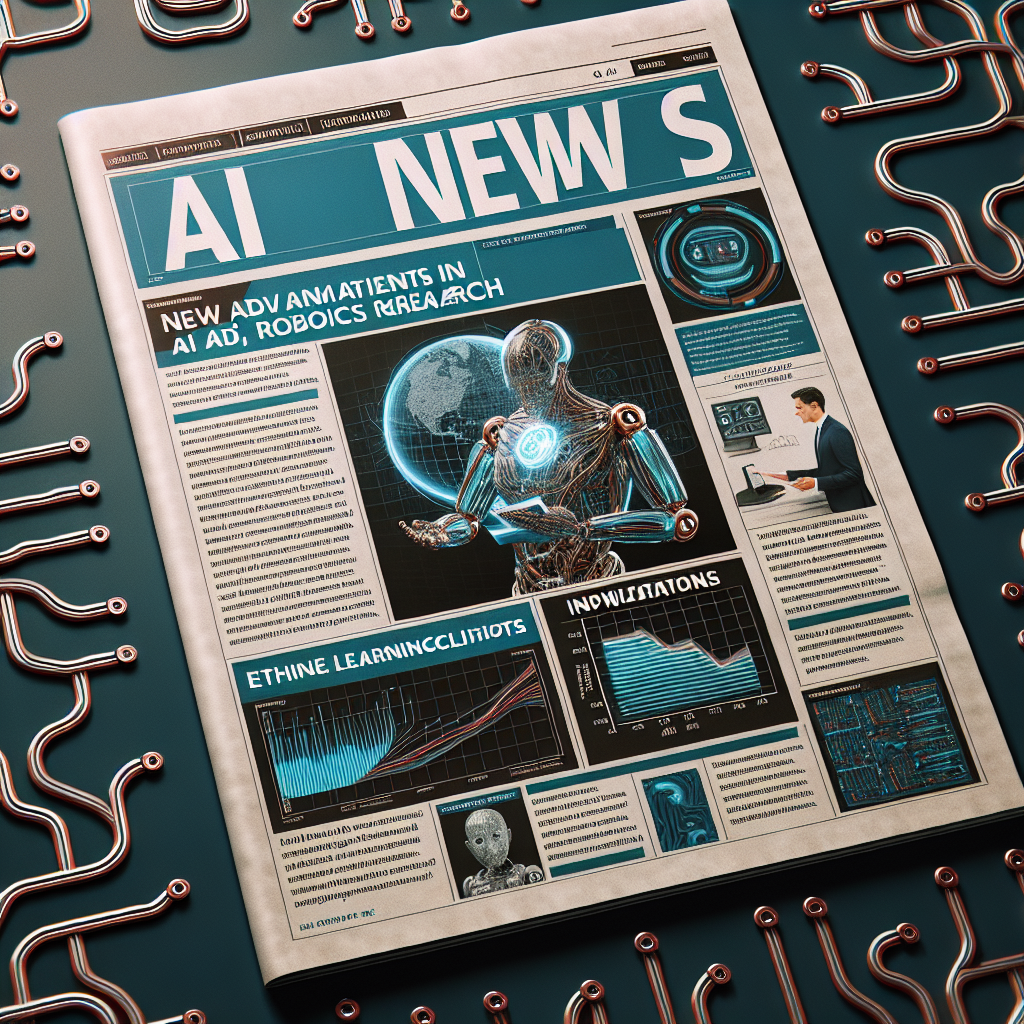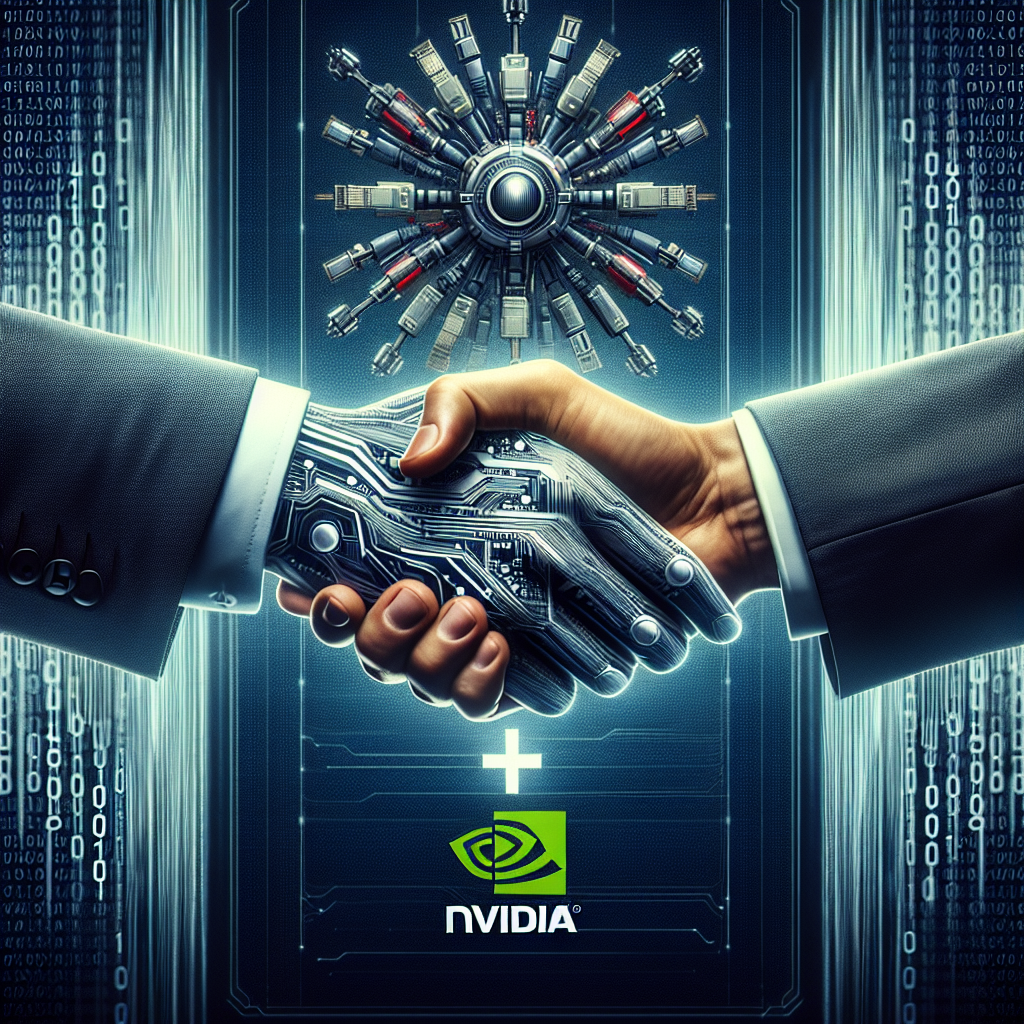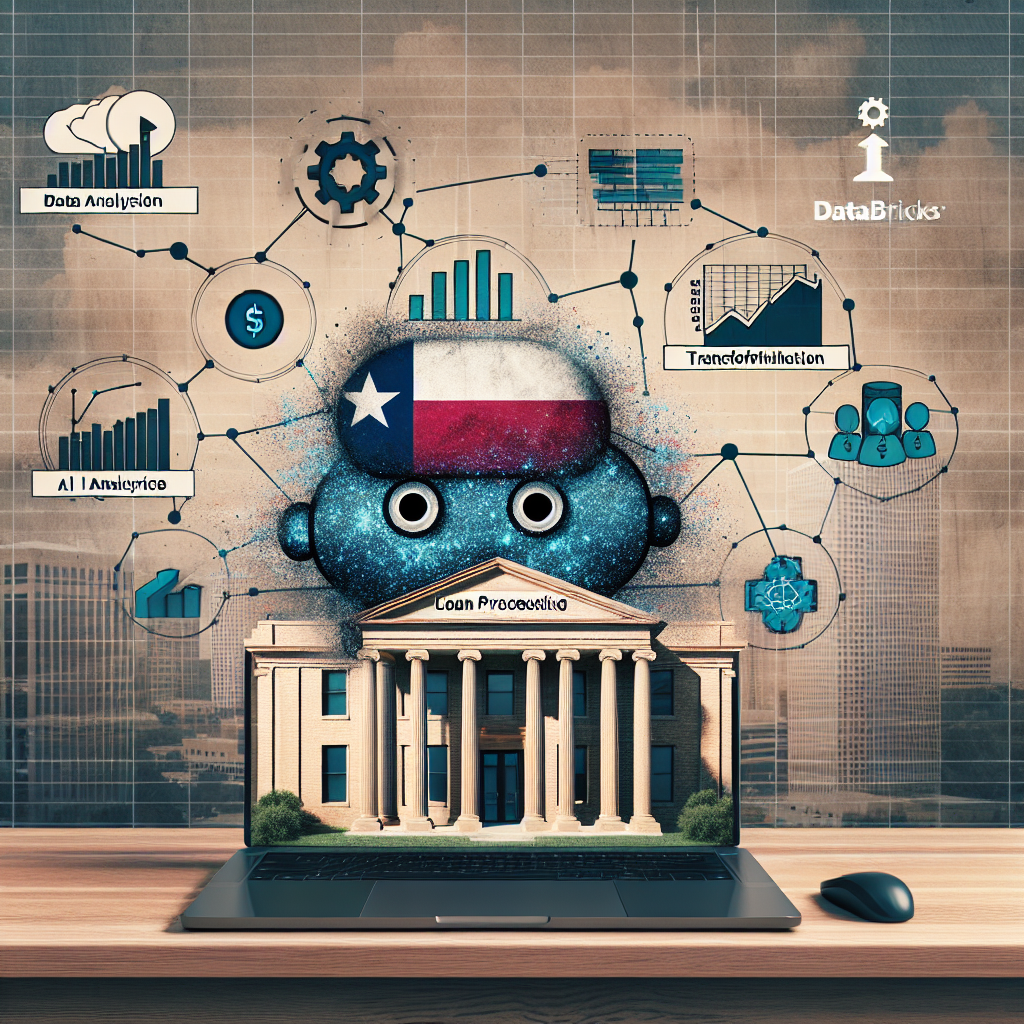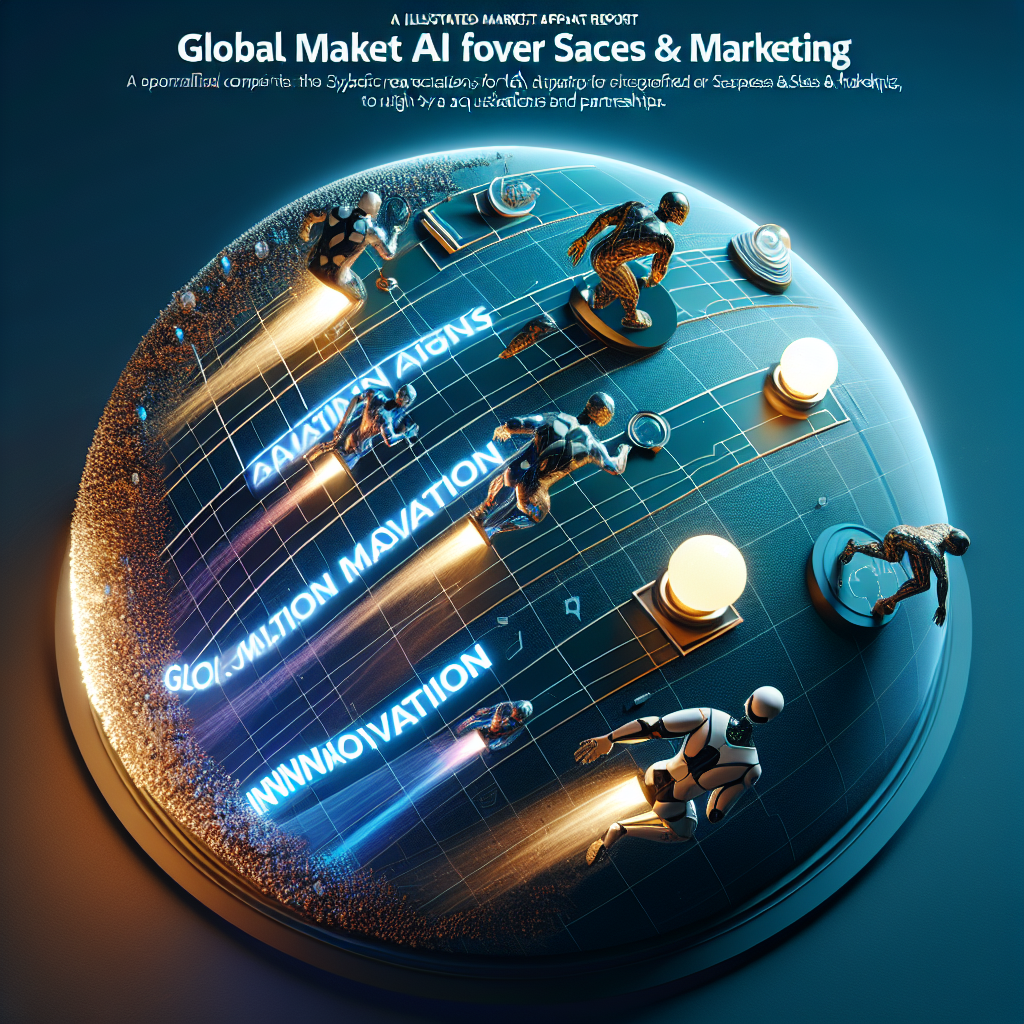-
Autonomous AI Trucking Technology Just Took A Big Leap Forward In Houston

The logistics and transportation industry is on the brink of a revolutionary transformation, with the latest advances in autonomous trucking technology taking center stage. Recently, in Houston, a significant milestone was achieved when a company named Bot Auto successfully demonstrated autonomous AI trucking capabilities. This achievement marks a turning point for the technology that has been long anticipated but remained in a state of ‘two years away’ for a considerable time.
While the successful demonstration is a promising step forward, it is essential to understand that this is not the end of the journey for autonomous trucking. Regulatory hurdles remain a major concern, as safety agencies are unlikely to approve fleets of driverless trucks on public highways without ample supporting data. They will require extensive performance metrics collected across various conditions and routes to ensure safety and reliability. Logistics operators also face their own challenges, weighing the enticing cost savings against the risks associated with entrusting millions of dollars’ worth of freight to unmanned vehicles.
The Houston breakthrough signals more than just a successful run; it emphasizes the potential of AI-assisted freight operations in a real-world environment. If Bot Auto and other competitors can replicate these results consistently, logistics companies may begin considering operational integrations with autonomous trucks that could drastically reshape their businesses. This would not translate into immediate coast-to-coast automation but could lead to trial deployments along specific freight routes, particularly in regions where the weather is predictable, and regulatory conversations are already in progress.
As the methodology of implementing autonomous trucking systems evolves, the ramifications extend far beyond mere transportation. The integration of AI-operated freight vehicles is anticipated to influence multiple facets of the industry, including insurance policies that will need to adapt to the different risk profiles of automated trucks. Additionally, highway planning could see alterations as infrastructure evolves to accommodate autonomous vehicles, ensuring their seamless integration into the existing logistics framework.
This technological leap is monumental not just for Houston but for the entire freight industry. The ripple effects could reshape not only shipping rates but also truck design philosophies as companies rethink how to create vehicles optimized for an AI-driven future. The potential for increased efficiency and closer route planning could reshape the competitive landscape, pushing manual driving operations towards automation in pursuit of cost-effectiveness and safety.
For business leaders and investors, keeping an eye on developments in autonomous trucking should be a priority. The implications of broader acceptance and deployment of this technology offer significant commercial upside. Companies in the logistics sector should begin preparations for balancing traditional transportation methods alongside emerging AI technologies to remain competitive in a transforming marketplace.
In conclusion, the successful autonomous run in Houston has opened doors to a new era in trucking and logistics. While the journey ahead is still fraught with challenges, both regulatory and operational, the progress made by Bot Auto signifies a breakthrough that may change the perception of what autonomous trucking can achieve. As the industry witnesses these technological advancements, engagement with the transformative aspects of logistics management and freight operations will become critical for those looking to harness the benefits of innovation in transportation.
-
MasterClass founder says CEOs who are not using AI daily are only 80% as good as their peers—he’s saved an entire day of work thanks to a custom GPT

In a rapidly evolving business landscape, the role of artificial intelligence (AI) has become more critical than ever. Anxiety about an AI-driven future permeates various levels of the workforce, from entry-level staff feeling threatened by automation to executives fearing they may become obsolete. As organizations scramble to ensure their survival amidst technological advancements, leaders like David Rogier, founder and CEO of MasterClass, advocate for the transformative potential of AI in enhancing productivity and strategic effectiveness.
Rogier expresses a compelling sentiment: for CEOs who neglect to incorporate AI into their daily operations, they are effectively diminishing their productivity to a mere 80%. This perspective highlights an urgency for leaders to adapt and embrace AI rather than resist it. “If you aren’t using AI and you’re a CEO, what are you doing?” Rogier says, urging peers to recognize AI not as a threat but as a powerful accelerator for their business practices.
By integrating AI tools into his workflow, Rogier claims to have salvaged an entire workday that he now reallocates toward areas demanding his leadership and vision. This substantial time savings can significantly shift the dynamics of organizational productivity, enabling CEOs to focus on strategic initiatives that require human insight and judgment.
Central to Rogier’s effectiveness is a personal suite of eight AI tools that he refers to as his “AI CEO Stack.” This customized approach is not reliant on a single AI application but instead leverages multiple tools tailored to address specific tasks. Leading this toolkit is “Davidify,” a bespoke version of ChatGPT that synthesizes Rogier’s notes and brings his writing style to life in emails and speeches. By inputting a few bullet points, he can generate articulate and well-structured communications effortlessly.
Beyond Davidify, Rogier utilizes various other applications that streamline processes and enhance project management efficiency. He employs Gamma to create visually appealing all-hands presentations quickly, while the combination of Make.com, Todoist, and ChatGPT automates the prioritization of his to-do list, eliminating hours of manual organization.
Furthermore, NotebookLM provides aggregated content from his desired YouTube talks and academic papers, transforming them into bite-sized 15-minute podcasts that are convenient for walks. Rogier’s toolkit also includes Lovable for rapid prototype feedback cycles, On Call for hassle-free consultations with industry experts like Chris Voss and Mark Cuban, Claude Projects for real-time feedback based on customer demographics, and Suno to curate personalized playlists for work and workouts.
Rogier’s insights serve as a clarion call for business leaders to recognize that AI is not just a passing trend but a fundamental shift in workplace dynamics. He highlights a broader trend: within the tech sector, CEOs are increasingly adopting AI to maintain a competitive edge. Microsoft CEO Satya Nadella exemplifies this embrace of technology, stating that GPT-5 and Microsoft 365 Copilot have become integral to his workflow, enhancing intelligence across applications on a daily basis.
This adoption reflects a broader understanding among leaders that leveraging AI tools is becoming essential for driving productivity and innovation in contemporary business environments. It is no longer a matter of simply being aware of AI; it is about integrating it into the core functioning of the organization.
The implications of Rogier’s experience are significant. As other CEOs observe his success, the anticipation is that more leaders will adopt similar strategies and tools to enhance their productivity. The realization that AI can reclaim precious time for higher-level strategic thinking prompts a reevaluation of how modern CEOs allocate their efforts. Instead of succumbing to feelings of insecurity, they should view AI as a partner in their success.
In conclusion, as David Rogier leads the charge in effectively harnessing AI for productivity, his insights offer a valuable roadmap for others to follow. For CEOs looking to elevate their effectiveness in a tech-centric world, the question is no longer whether to adopt AI, but rather how to implement it thoughtfully and strategically to unlock the full potential of their roles.
-
Bravent Continues to Enhance Business ROI in South Florida with AI Solutions

Bravent’s Ongoing Commitment to AI-Driven Innovation in South Florida
In an era where artificial intelligence (AI) is increasingly shaping business landscapes, Bravent stands out as a key player enhancing business ROI in South Florida. The company recently hosted an engaging gathering in Miami, reflecting its commitment to innovation through collaboration. This event not only emphasized AI’s practical applications across various industries but also reinforced South Florida’s emerging status as an innovation hub.
On October 4, 2025, Bravent convened a range of stakeholders—including business leaders, university representatives, and regional organizations—to share insights on AI’s transformative potential. Among the notable speakers were Nico Abelenda, a Senior Partner Technology Strategist at Microsoft, and Mario López, CIO at Bravent. Their discussions centered on leveraging digital transformation to drive regional growth and the need for advanced solutions in sectors like manufacturing, logistics, financial services, and retail.
Bravent’s collaborative approach has led to successful partnerships with a variety of esteemed companies such as John Deere, Ferrovial, and Burger King. These collaborations generate reliable technological solutions that tackle complex operational challenges while streamlining decision-making processes. Long-term clients praise Bravent for its consistent results and clear communication across diverse international initiatives, marking the company as a trusted partner in business innovation.
The firm’s recognition as a Microsoft Global Partner demonstrates its leadership in innovation and effective delivery of technology solutions. This status is further bolstered by Bravent’s commitment to intertwining its global reach with strong local relationships in Florida. Collaborations with established institutions like Miami Beacon Council and Miami Dade College enable Bravent to better address the needs of its clients while staying attuned to local business priorities.
Bravent’s strategy encompasses proactive engagement through attentive listening and responsive support, ensuring that clients receive tailored solutions from project discovery to rollout. The recent Miami event highlighted this strategy, positioning Bravent as not just a participant but a convener of practical discussions and immediate opportunities within the business technology space. The feedback from the audience underscored a collective optimism for the future of technology adoption in South Florida.
Additionally, Bravent exemplifies how a global company can contribute to regional growth by nurturing collaborations that bridge academia and industry. The discussions on AI at the event underscored the extensive knowledge pool available through local institutions and highlighted the advantages of leveraging educational expertise to implement front-line solutions effectively.
As Bravent continues to expand its presence in Florida’s tech sector, the company remains dedicated to deepening relationships with its tech and business partners. By addressing immediate business needs and setting the stage for long-term value creation, Bravent is poised to play a vital role in the ongoing digital transformation landscape.
In summary, Bravent’s initiative to enhance business ROI through the integration of AI not only signifies its strategic importance in South Florida’s economic fabric but also showcases the power of collaboration in fostering innovation. As the region embraces advanced technology, Bravent is leading the charge—empowering businesses to thrive in a rapidly evolving marketplace.
About Bravent
Bravent is a global technology partner specializing in digital business solutions across diverse sectors. With its headquarters in Spain, the company has established a strong presence in the Americas, the Middle East, and Europe. Recognized as a Microsoft Global Partner, Bravent is not only focused on delivering innovative AI solutions but is also committed to fostering strong local connections that yield sustainable growth in the regions it serves.
-
IBM launches $500 million venture fund to fuel AI startup ecosystem

IBM has embarked on a significant initiative with the launch of its $500 million Enterprise AI Venture Fund, aiming to invest strategically in startups that align with its Watsonx platform and the company’s broader technological ecosystem, including the promising field of quantum computing.
The timing of this venture is critical as investments in artificial intelligence are projected to skyrocket to $122 billion by 2025, with U.S. deals constituting a commanding 85.5% of the market. IBM’s proactive approach positions the company to take advantage of the rapidly evolving AI landscape and to support the next generation of enterprise-focused startups. This initiative not only symbolizes IBM’s commitment to innovation but also highlights the company’s strategic foresight in recognizing business opportunities within the burgeoning AI sector.
Claudia Fan Munce, the head of IBM’s venture capital division, has articulated a robust five-pillar investment philosophy that shapes the company’s funding decisions. Each pillar serves as a guideline to ensure that selected startups meet essential criteria for success in the AI arena. The first pillar emphasizes technological differentiation, where startups are expected to provide innovative solutions that tackle significant enterprise challenges, such as developing scalable AI models suited for data-intensive industries.
The second pillar focuses on market readiness. Startups must demonstrate a clear roadmap for commercializing their solutions while navigating regulatory complexities and practical integration challenges within established systems. This evaluation ensures that investments are made in entities poised for real-world application and growth.
Team strength constitutes the third pillar, requiring that founding teams possess proven expertise and often have deep domain knowledge, particularly in crucial areas such as AI ethics and hybrid cloud systems. A strong team not only bolsters a startup’s prospects but also instills investor confidence in the venture’s direction.
Scalability is the fourth pillar, which accents the necessity for technology to evolve without proportionate increases in costs. IBM will assess potential synergies between the startups and its own infrastructure, ensuring that supported technologies can expand efficiently and sustainably.
The final pillar highlights the importance of ethical and sustainable impact. Startups seeking funding must show a firm commitment to addressing issues such as bias mitigation and energy-efficient AI, aligning their operations with global sustainability standards. This consideration reflects IBM’s dedication to promoting responsible AI development.
IBM’s selective investment lens has already borne fruit with strategic bets on companies such as Hugging Face, known for its contributions to open-source AI tools, and HiddenLayer, which specializes in AI security solutions. These investments illustrate IBM’s intention to nurture innovations that align not only with profitability but also with ethical considerations.
Looking at the bigger picture, as AI adoption accelerates across various industries, IBM’s venture strategy plays a crucial role in not only driving technological innovation but also solidifying the company’s market footing. The investments from this $500 million fund are expected to resonate across diverse domains including healthcare, finance, and beyond, as they seek to address real-world problems through cutting-edge technology.
What lies ahead for IBM is promising. The company anticipates that its software revenue will surpass $13.5 billion by 2025, positioning it advantageously in a landscape projected to see $500 billion in AI capital spending during the same year. IBM’s vision and selective investment strategy place it in a powerful position to influence the future of enterprise AI, ensuring that the transformation is responsible, impactful, and sustainable.
-
AI News

Tencent researchers have made significant strides in the intersection of artificial intelligence and strategic reasoning with their newly developed training framework known as “Think in Games” (TiG). This innovative framework harnesses the complexities of multiplayer gaming, specifically targeting the popular battle arena game Honor of Kings, to enhance AI models’ decision-making capabilities. The incorporation of gameplay dynamics into AI training not only escalates the learning curve but also bridges the gap between human-like strategic thinking and machine learning.
The TiG framework employs a blend of supervised and reinforcement learning techniques, showcasing a hybrid approach that draws upon the rich dataset derived from actual matches in Honor of Kings. The researchers adeptly fused this with a method termed Group Relative Policy Optimization (GRPO). This strategic combination has proven effective in allowing smaller language models to demonstrate superior performance compared to their larger counterparts, especially in discerning and executing strategic decisions.
In a noteworthy achievement, Tencent’s Qwen3-14B model recorded an impressive 90.9% accuracy in making correct strategic decisions after just 2,000 training steps. This statistic is remarkable as it outperformed the larger Deepseek-R1 model, which achieved 86.7% accuracy. The practical implications of this breakthrough suggest not only a potential shift in how AI training is approached but also indicate that size does not always dictate performance. Smaller models can be optimized effectively through innovative training methods to yield substantial competitive advantages.
Moreover, the TiG framework’s implications extend beyond the realm of gaming, positing that the principles derived from strategic game-playing can be applied to various sectors that require complex decision-making processes. Industries such as finance, logistics, and even healthcare can benefit from the strategic reasoning capabilities cultivated through this framework. By incorporating game theory and competitive strategy into AI training, businesses might develop models that can navigate real-world challenges more adeptly.
As the gaming environment integrates sophisticated AI and engagement methodologies, the outcomes exhibit incredible promise for the future of AI applications. The researchers underscore that these systems not only enhance gameplay abilities but also offer a pathway to more explainable and transparent AI reasoning. This transparency is paramount, particularly in sectors where decision-making rationales must be articulated clearly to stakeholders.
With the accelerating pace of AI advancements, Tencent’s research could serve as a pivotal reference point for future developments in AI training regimes. By leveraging the intrinsic complexity of strategic games, AI developers and researchers can potentially enable machines to mimic human-like cognitive abilities in navigating complex scenarios. Furthermore, the integration of such strategic frameworks could lead to more adaptable and responsive AI systems capable of evolving as new challenges emerge.
Overall, Tencent’s TiG framework exemplifies how the confluence of entertainment and academic research can yield practical innovations. It invites business leaders, product builders, and investors to critically reconsider existing paradigms surrounding AI training and deployment, emphasizing the viability of smaller, strategically trained models in addressing practical business challenges. The implications of this research propel us closer to a landscape where AI can not only execute tasks but also understand the underlying strategies, leading to more effective outcomes across various industries.
-
Fujitsu and Nvidia Expand Partnership to Accelerate AI Implementation

In a significant development for the artificial intelligence landscape, Fujitsu and Nvidia have announced an expansion of their existing collaboration, focusing on the acceleration of AI implementation across various industries. This partnership marks an important step introducing advanced AI technologies into business operations, aiming to enhance productivity and efficiency.
The announcement, made on October 4th, highlights the companies’ intentions to jointly develop a robust computing foundation that synergizes Fujitsu’s powerful central processing units (CPUs) with Nvidia’s cutting-edge graphics processing units (GPUs). This combination aims to create next-generation computing systems with unparalleled efficiency and speed, setting a new standard for AI applications. The goal is to enable agent-type AI that can autonomously perform tasks traditionally handled by humans, potentially revolutionizing how businesses operate.
This collaboration is not just about fostering AI capabilities; it also represents a strategic move to facilitate industrial automation. In conjunction with their partnership, Fujitsu and Nvidia are in discussions with Yaskawa Electric, a leading player in industrial robotics. Their goal is to integrate autonomous robots within manufacturing and industrial settings, thereby streamlining operations and reducing reliance on manual labor.
The implications of such advanced AI implementations are vast. By harnessing high-performance computing resources, the partnership aims to address critical challenges industries face, such as labor shortages and the need for enhanced operational efficiencies. As businesses look to AI for solutions, the collaboration between Fujitsu and Nvidia positions them at the forefront of delivering practical, scalable applications.
Moreover, the integration of AI with industrial robotics can lead to a new era of smart factories, where machines not only automate processes but also learn and adapt to improve performance over time. This alignment between AI and robotics could significantly boost production rates and innovation capabilities in various sectors.
As the demand for AI technology continues to grow, Fujitsu and Nvidia’s strengthened partnership exemplifies how technology giants can collaborate to drive significant advancements. Their approach not only addresses immediate business needs but also lays the groundwork for future innovations that could transform the industry landscape.
Furthermore, as they embark on this journey, both companies are expected to leverage their expertise in hardware development and software innovation. Fujitsu’s experience in computing infrastructure combined with Nvidia’s prowess in AI and graphics processing presents a compelling value proposition for businesses seeking to adopt AI solutions.
In summary, the expansion of the Fujitsu and Nvidia partnership signals a pivotal moment for AI technology, particularly in the realm of industrial applications. With a focus on developing agent-type AI and autonomous robots, this collaboration is poised to accelerate the practical use of AI across various sectors, heralding a new era of efficiency and innovation. As industries continue to embrace automation, this partnership could be a game-changer, setting benchmarks for AI adoption and implementation.
-
Accelerating Loan Processing with AI on Databricks: How Vantage Bank Texas Transformed Lending Workflows

The financial landscape is evolving rapidly, and Vantage Bank in Texas is leading this transformation by harnessing the power of Artificial Intelligence (AI) to streamline its lending workflows. Faced with labor-intensive and error-prone loan processing methods, the bank sought a solution that would not only minimize errors but also allow their lenders to concentrate more on customer engagement and satisfaction.
According to Shawn Main, the Chief Business Architect at Vantage Bank, “Processing loan requests efficiently is critical to offering our customers tailored products.” The traditional approach requires extensive manual review of policy documents and coding manuals, which can result in significant oversight. Even minor discrepancies could lead to downstream complications, increasing workloads, and delaying approvals.
To address these challenges, Vantage Bank collaborated with Cavallo Technologies, leveraging the robust capabilities of the Databricks platform. Together, they developed an AI-powered lending assistant specifically aimed at enhancing the lending process. The solution is designed not only to handle complex lending questions but also to ensure security, scalability, and user trust—all of which are paramount in the financial services sector.
One of the standout features of this implementation is the unprecedented speed with which value was realized. Cavallo Technologies delivered a functional minimum viable product (MVP) on the very first day of collaboration. This efficiency highlights the advantage of using the Databricks unified platform, presenting unique opportunities for rapid integration and iteration.
As Guillaume Colley, Director of AI and Analytics at Cavallo Technologies, explains, “Databricks allowed us to deliver a product on Day 1, enabling the Vantage team to begin integrating the chatbot into their lending origination system as we refined the AI engine and user interface.” This rapid development is a game changer for financial institutions looking to innovate at speed.
Importantly, this AI lending assistant is built for accuracy. A custom large language model (LLM) evaluator continuously monitors the AI engine’s performance, ensuring an impressive 94% accuracy for answers pertaining to complex lending inquiries. The focus here extends beyond simply providing answers; it emphasizes delivering the right answers consistently, which is vital in the financial realm.
To foster user trust, the chatbot interface includes citations from relevant documents and allows users to rate the quality of responses. Such transparency encourages lenders to verify sources and contribute to a feedback loop that promotes continuous improvement. This contributes to a user-centric approach, reinforcing the banking ethos of reliability and customer trust.
Additionally, the solution features smart cost management capabilities. The AI engine and user interface can scale down to zero during off-hours, resulting in significant cost savings. However, they ramp back up seamlessly when functional demands increase. This flexibility ensures optimal resource allocation and budget management.
To guarantee that lenders are equipped with the most current information, automated workflows refresh the AI’s knowledge base upon detecting new or modified loan policy documents. This ensures accuracy and relevance in an industry heavily influenced by regulatory changes and market conditions.
Furthermore, the deployment includes an AI and business intelligence (BI) dashboard that delivers real-time metrics on usage, performance, and user feedback. This strategic visibility empowers leadership teams to make informed, data-driven decisions that can steer the organization in the right direction.
The choice of Databricks as a foundational platform for the development of this AI lending assistant made a significant difference in the project’s success. It provided Cavallo Technologies with the tools necessary to execute a complex vision within a tight timeframe, setting Vantage Bank on a trajectory of progressive innovation in lending.
Through the collaboration of Vantage Bank, Cavallo Technologies, and Databricks, the financial industry witnesses a prime example of how AI can dramatically enhance customer experience and operational efficiency within lending workflows. The success of this initiative underscores the viability of AI solutions in transforming traditional banking processes into modern, efficient systems.
-
AI for Sales & Marketing Market Global Forecast Report 2025-2030: Competition Intensifies as Tech Giants, Startups, and Specialists Drive Innovation Through Acquisitions and Partnerships

In the ever-evolving landscape of business, the role of artificial intelligence (AI) is becoming increasingly pivotal, particularly in the realm of sales and marketing. The newly released report titled “AI for Sales & Marketing Market – Global Forecast 2025-2030” sheds light on this dynamic sector, revealing significant growth trends and advancements that promise to reshape how organizations interact with their customers.
The report indicates a substantial increase in the AI for Sales and Marketing Market, which has surged from USD 22.32 billion in 2024 to USD 25.63 billion in 2025. This upward trajectory is expected to continue with a compound annual growth rate (CAGR) of 15.38%, ultimately reaching USD 52.68 billion by 2030. Such figures underline the importance of AI technologies in achieving competitive advantage and driving innovation across various industries.
Artificial intelligence is not just a buzzword; it is redefining the way businesses engage with their prospects and customers. As organizations grapple with increasingly complex data landscapes and heightened buyer expectations, they are turning to AI to ensure precision and personalization in their sales and marketing strategies. The deployment of AI capabilities has emerged as a critical differentiator, enabling businesses to offer tailored solutions that resonate with their audiences.
Key AI applications such as automated lead scoring, dynamic content generation, and predictive customer insights are becoming essential tools in the marketer’s arsenal. These technologies empower organizations to make smarter, faster decisions at every stage of the customer journey. For instance, automated lead scoring allows sales teams to prioritize their efforts on leads that are more likely to convert, ultimately optimizing resource allocation and boosting conversion rates.
Market leaders today understand that leveraging advanced algorithms not only streamlines operations but also unveils hidden growth opportunities. However, the integration of machine learning models, natural language processing engines, and computer vision applications into existing workflows requires a balance of technical capabilities, change management skills, and strict data governance policies. Decision-makers must foster cross-functional alignment to fully harness the power of these emerging technologies, ensuring that all team members work toward shared objectives.
The executive summary of the report provides a comprehensive overview of the current state of the AI for sales and marketing landscape, highlighting transformative shifts in go-to-market strategies and assessing the impact of U.S. tariff policies on market dynamics through 2025. Furthermore, it presents an in-depth segmentation analysis across various components, technology types, organizational sizes, deployment modes, applications, and end-user industries.
Importantly, the report addresses how revolutionary forces are redefining go-to-market dynamics. The advancements in machine learning, deep learning, and natural language processing are fundamentally altering traditional sales and marketing models. Companies that historically relied on manual segmentation are now employing predictive analytics and computer vision technologies to forecast customer needs with unprecedented accuracy.
In conjunction with these developments, generative AI tools create personalized content on a large scale, while advanced recommendation engines and dynamic pricing strategies enhance customer engagement and conversion efficiency across multiple channels. Additionally, integration platforms serve to bridge gaps between various customer relationship management (CRM) systems and customer-facing technologies like chatbots and voice assistants, creating seamless customer experiences.
The insights from this report are invaluable for business leaders, product builders, and investors, providing actionable recommendations for navigating the complexities of the AI for sales and marketing terrain. It also presents a transparent overview of the research methodology employed, ensuring the credibility and relevance of the findings.
As the competition intensifies with tech giants, startups, and specialists driving innovation through acquisitions and partnerships, understanding these trends will be crucial for stakeholders looking to capitalize on the growth potential of AI technologies in sales and marketing. The future is bright for organizations ready to embrace AI, empowering them to navigate the changing tides of consumer expectations and market demands.
-
AI Turns Wi-Fi Signals Into High-Resolution Images With Stable Diffusion 3

Recent developments in artificial intelligence have unveiled a groundbreaking application that transforms Wi-Fi signals into remarkably accurate visual representations of rooms and their occupants. Researchers from the University of Tokyo have leveraged the capabilities of Stable Diffusion 3 along with Wi-Fi Channel State Information (CSI) in a project dubbed LatentCSI. This innovative method signals a remarkable step forward in the field of non-invasive surveillance technology, utilizing existing infrastructure in entirely new ways.
The core of this technology lies in its ability to combine the interpreted data from Wi-Fi signal bounces with the sophisticated image-generation capabilities of Stable Diffusion 3. By analyzing the intricate patterns generated by Wi-Fi signals as they interact with objects and people, this system can create high-resolution images of a space, relying solely on signals that are omnipresent in our daily environments. Although current output images are approximations, they demonstrate the vast potential of using AI to derive meaningful insights from invisibly transmitted data.
LatentCSI operates on the premise that Wi-Fi CSI, previously used for motion detection since as early as 2019, can be repurposed for creating visual images. However, the system does rely on previous photographs of the room and its potential occupants to achieve more accurate representations. Through a sophisticated training process, Stable Diffusion 3 is equipped to convert the chaotic pixelation derived from Wi-Fi signals into coherent, recognizable images that can be visually interpreted, enhancing our understanding of surrounding environments.
This technology naturally raises questions about privacy and surveillance, particularly in areas that lack traditional camera systems. While the capability to visualize a room through Wi-Fi signals necessitates prior knowledge of that space, its implications for enhancing surveillance mechanisms—even in low-visibility conditions—are noteworthy. Businesses and government facilities might find the capacity to perceive activity within their premises invaluable, potentially mitigating risks associated with unauthorized access or other security concerns.
Although the advancement of AI in this context is thrilling, it comes with inherent caveats. The requirement for stability and accuracy in output images could limit real-world application, especially in dynamic spaces where objects may shift rapidly, disrupting the fidelity of the generated visuals. However, the implications for fields such as security, health monitoring in elderly care, and smart home automation are profound. This technology could eventually evolve to support improved emergency response systems, disaster management, and even privacy-focused applications that prioritize consent.
As this research progresses and the technology matures, key milestones in the process will need to be highlighted, particularly concerning the mechanisms that ensure user privacy and ethical considerations in deploying such surveillance capabilities. While the potential for misuse exists, so does the opportunity for creating enhanced safety measures. The challenge moving forward will be to strike a balance between leveraging advanced technology for safety and respecting individual privacy rights.
In conclusion, the intersection of AI, machine learning, and everyday technologies like Wi-Fi presents both stunning possibilities and serious social quandaries. The advancements represented by LatentCSI are not just technical novelties; they signify a shift towards a future where our environments can be interpreted in unprecedented ways. As we stand on the brink of this transformation, scrutiny, and dialogue regarding the ethical implementation of such technologies will be critical in shaping their role within society.
-
Japan’s AI Demand Will Increase 320x by 2030, Industry Leader Says at NVIDIA AI Day Tokyo

During NVIDIA AI Day Tokyo, a crucial event for AI enthusiasts, industry leaders gathered to discuss the transformative landscape of artificial intelligence in Japan. With over 900 attendees, the conference featured extensive sessions covering a range of topics, from agentic and physical AI to the exciting capabilities of quantum computing and the rise of AI factories.
One of the standout presentations came from Kuniyoshi Suzuki, the senior director of the cloud AI service division at SoftBank Corp. He pointed to a staggering forecast for Japan’s AI computing power demand—a 320-fold increase from 2020 levels by the year 2030. This prediction underscores the urgency for infrastructure and technological advancements as businesses and industries gear up for an AI-driven future.
The implications of such a significant increase in demand are profound. It suggests a seismic shift in how businesses operate, requiring them to rethink their IT strategies and embrace innovative AI solutions. The rise of AI is no longer a matter of theoretical possibilities, but an imminent reality that organizations must prepare for.
To meet this burgeoning demand, industry players like SoftBank, GMO Internet, and KDDI showcased their latest advancements at AI Day Tokyo. Each of these companies is at the forefront of developing AI technologies, illustrating their commitment to building robust ecosystems that empower developers in creating AI models and services. The collaboration between these organizations not only enhances technological capabilities but also focuses on ensuring safety and transparency in AI adoption.
One crucial point raised by Suzuki was the necessity for Japan to build a foundation of domestic technologies. He emphasized the importance of not only developing high-performance, Japan-made large language models but also establishing a large-scale domestic computing infrastructure capable of sustaining continuous development of these models. This approach is essential for fostering innovation while mitigating potential risks associated with data privacy and security.
The significance of establishing a self-sufficient AI ecosystem cannot be overstated. It allows Japan to safeguard its technological sovereignty and provides businesses with the tools necessary to harness AI effectively. In a world where reliance on foreign technologies can pose risks, developing homegrown solutions creates a more stable and autonomous technological environment.
Moreover, the discussions at AI Day Tokyo reflect a broader global trend toward embracing AI in various sectors, including healthcare, finance, and manufacturing. By prioritizing AI development, Japan is not only positioning itself as a leader in the technology space but also enhancing its competitive edge on the global stage.
Looking ahead, the path toward achieving this ambitious forecast involves concerted efforts across multiple fronts. Companies will need to invest significantly in research and development, infrastructure, and talent acquisition to ensure they remain leaders in the AI race. Collaboration between academia, industry, and government will be essential to create supportive policies and frameworks that promote innovation.
In conclusion, the insights shared at NVIDIA AI Day Tokyo highlight the monumental shift anticipated in Japan’s demand for AI technologies by 2030. With predictions of a 320-fold increase in AI computing power, the stakes are high for businesses to adapt and innovate. The emphasis on building a domestic foundation for AI technologies represents a strategic move towards ensuring Japan remains at the forefront of the AI revolution. As organizations continue to navigate this evolving landscape, the need for vigilance and proactive development will be paramount to thrive in an increasingly AI-centric world.
